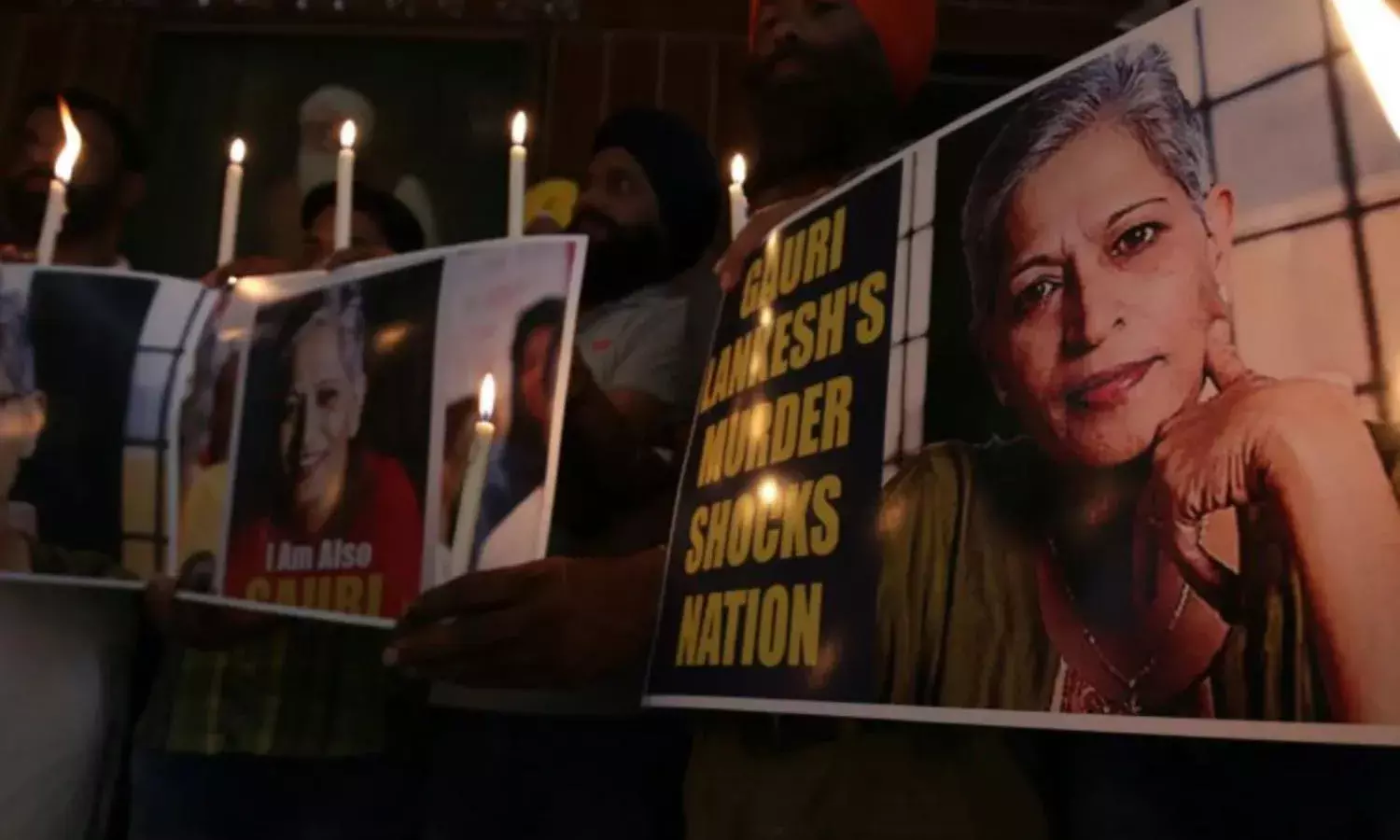
Editors Note: Women journalists in India have faced severe online attacks, from sexual harassment to intimidation to threats all posing a major danger to their mental and physical security. The terminology used against women scribes is of a filthy sexual nature with many having had to file cases and seek police help, although little has come of it. There is little response to the abuse from the media itself, with governments and politicians barely concerned. The UN report has now established this violence to be a world wide phenomenon with 75 per cent of women journalists interviewed in a study saying they have been victims of online violence on more than one occasion:
UNITED NATIONS: “Email and social media access attempts, extremely aggressive comments, photo montages, massive defamation and intimidation campaigns on WhatsApp. This is what women journalists are facing for doing our job,” said Brazilian journalist Bianca Santana.
Santana addressed a United Nations Educational, Scientific and Cultural Organisation (UNESCO)-led virtual event to tackle online harassment and abuse against women journalists on Thursday, Mar. 19.
She told the forum that the online and ICT worlds can be dangerous places for women journalists.
The UN Human Rights Council Special Rapporteur for freedom of opinion and expression Irene Khan said during the forum that perpetrators of online abuse of women journalists use the internet to launch vicious and amplified attacks.
She reminded the gathering that she has experienced online abuse firsthand. A former consulting newspaper editor and human rights activist in Bangladesh, she has been a target of gender-based violence, sexual violence and harassment.
“On one hand, the victims – the women – are much more vulnerable in this virtual world because of the amplification of the attacks. At the same time, the perpetrators are much more protected because of their anonymity and the impunity they enjoy,” she said.
According to a 2020 report by the UN Human Rights Council titled ‘Combating violence against women journalists,’ not only are women attacked online at a rate far exceeding men, but they also face increasing sexualised content and stalking.
UNESCO partnered with the permanent missions of Austria, Canada, Costa Rica, and the United Kingdom to the United Nations to host the virtual event.
Canada’s representative Robert Oliphant said his country is contributing to programmes that support women journalists, through the non-profit Article 19. That organisation states that while technology has opened up opportunities for women journalists to communicate, they now reproduce and amplify harassment and abuse of the professionals across platforms.
“In today’s world attacks take place both on and offline. Women journalists face sexual harassment, intimidation, violence and in the worst cases, they’re killed,” said Oliphant. “Too often authorities do little to bring those responsible to justice.”
Quoting figures from a UNESCO-International Centre for Journalists study on online attacks on women journalists, UNESCO’s Chief of Freedom of Expression and Safety of Journalists Guilherme Canela said the attacks are widespread.
“Different platforms and different forms of online violence against those women journalists and very concerning is that of 20 percent of them reported suffering some sort of offline violence connected to the online threats that they have received. This is very scary,” he said.
Over 900 women journalists from 125 countries took part in the study.
- 73 percent of respondents in the study said that they had experienced online violence in the course of their work,
- 25 percent had received threats of physical violence, and
- 18 percent were threatened with sexual violence.
“The violence and threats are gender-based. When the violence is against women journalists there is an extra component. The tone of the violence, the language is related to sexual images, sexual comments,” Canela said.
The partners say these crimes are geared at undermining and silencing women journalists, which in turn are attacks on democratic freedoms, including the right to free and open expression.”
“We cannot preserve and protect freedom of expression for half of society if we do not take action against this kind of harassment. The attacks also have a direct impact on the right of society to access a plurality of information and perspectives,” said Teres Ribeiro, Representative on Freedom of the Media at the Organisation for Security and Cooperation in Europe.
Article 19’s Senior Legal Officer Paulina Gutierrez said online attacks against women journalists deny women their right to privacy, freedom of expression, participation in public debates.
“We can see women limiting their journalistic reporting, we can see them self-censoring; deciding not to publish anymore their public views or opinions on very important topics for public discussion,” she said.
“We need to remember that the right to freedom of expression is an essential means to tackle discrimination and gender-based violence.”
Inter Press Service

